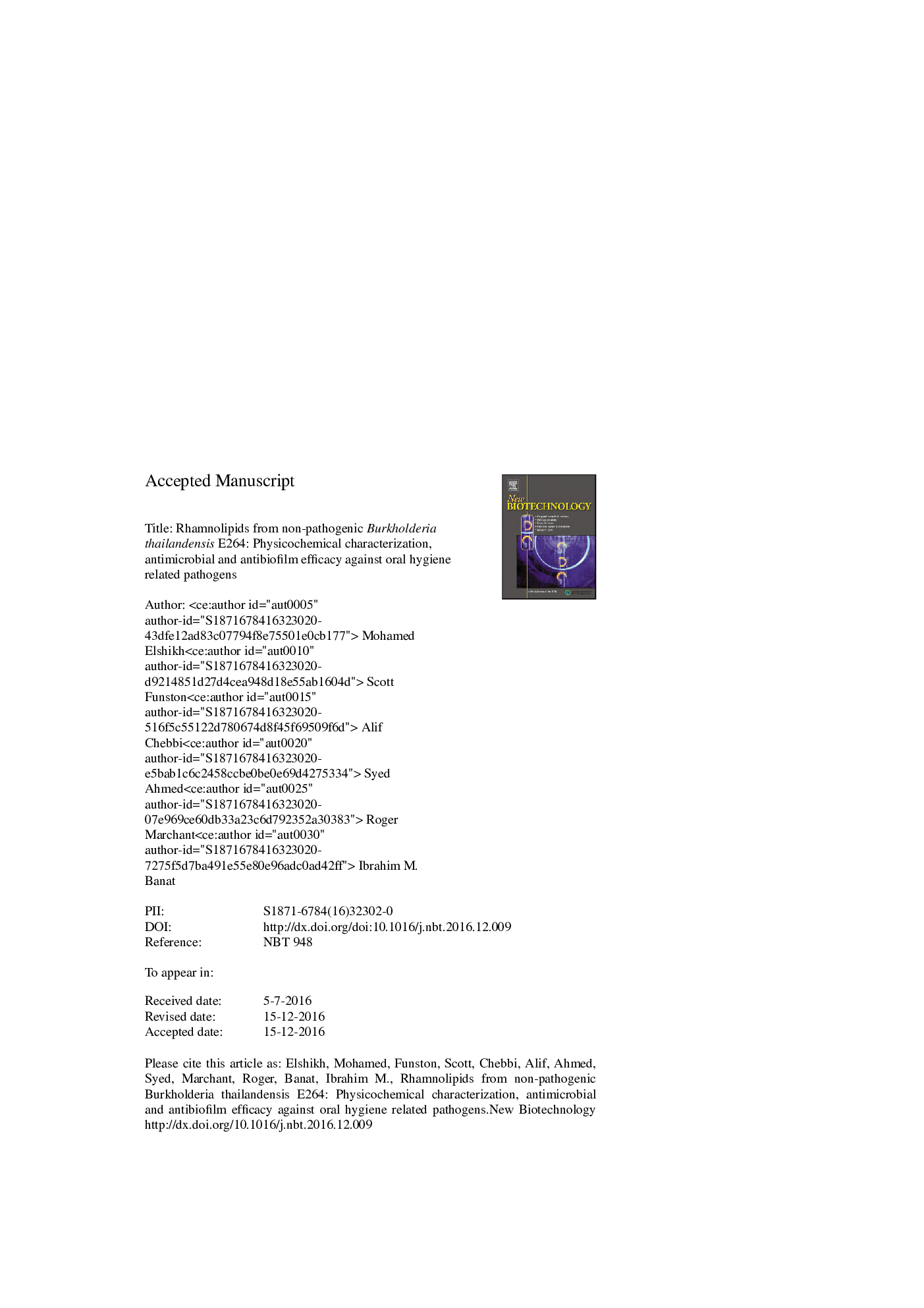| کد مقاله | کد نشریه | سال انتشار | مقاله انگلیسی | نسخه تمام متن |
|---|---|---|---|---|
| 4754928 | 1418377 | 2017 | 28 صفحه PDF | دانلود رایگان |
عنوان انگلیسی مقاله ISI
Rhamnolipids from non-pathogenic Burkholderia thailandensis E264: Physicochemical characterization, antimicrobial and antibiofilm efficacy against oral hygiene related pathogens
دانلود مقاله + سفارش ترجمه
دانلود مقاله ISI انگلیسی
رایگان برای ایرانیان
موضوعات مرتبط
مهندسی و علوم پایه
مهندسی شیمی
بیو مهندسی (مهندسی زیستی)
پیش نمایش صفحه اول مقاله

چکیده انگلیسی
Biosurfactants are naturally occurring surface active compounds that have mainly been exploited for environmental applications and consumer products, with their biomedical efficacy an emerging area of research. Rhamnolipids area major group of biosurfactants that have been reported for their antimicrobial and antibiofilm efficacy. One of the main limiting factors for scaled up production and downstream applications of rhamnolipids is the fact that they are predominantly produced from the opportunistic pathogen Pseudomonas aeruginosa. In this article, we have reported the production and characterisation of long chain rhamnolipids from non-pathogenic Burkholderia thailandensis E264 (ATCC 700388). We have also investigated the antibacterial and antibiofilm properties of these rhamnolipids against some oral pathogens (Streptococcus oralis, Actinomyces naeslundii, Neisseria mucosa and Streptococcus sanguinis), important for oral health and hygiene. Treating these bacteria with different concentrations of long chain rhamnolipids resulted in a reduction of 3-4 log of bacterial viability, placing these rhamnolipids close to being classified as biocidal. Investigating long chain rhamnolipid efficacy as antibiofilm agents for prospective oral-related applications revealed good potency against oral-bacteria biofilms in a co-incubation experiments, in a pre-coated surface format, in disrupting immature biofilms and has shown excellent combination effect with Lauryl Sodium Sulphate which resulted in a drastic decrease in its minimal inhibitory concentration against different bacteria. Investigating the rhamnolipid permeabilization effect along with their ability to induce the formation of reactive oxygen species has shed light on the mechanism through which inhibition/killing of bacteria may occur.
ناشر
Database: Elsevier - ScienceDirect (ساینس دایرکت)
Journal: New Biotechnology - Volume 36, 25 May 2017, Pages 26-36
Journal: New Biotechnology - Volume 36, 25 May 2017, Pages 26-36
نویسندگان
Mohamed Elshikh, Scott Funston, Alif Chebbi, Syed Ahmed, Roger Marchant, Ibrahim M. Banat,